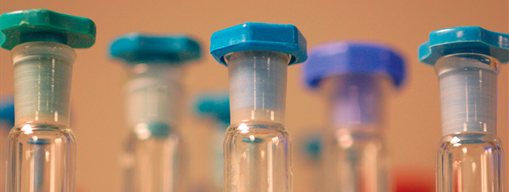 Administered by the Division of Environmental Health & Risk Management, School of Geography, Earth & Environmental Sciences
Administered by the Division of Environmental Health & Risk Management, School of Geography, Earth & Environmental Sciences
 The last four decades has seen tremendous growth in public, scientific and governmental interest in the environmental effects of persistent organic pollutants (POPs). Owing to health concerns (inter alia Food Standards Agency, 2001; Huisman et al, 1995; Jacobson and Jacobson, 1996), and in recognition of the global nature of POPs contamination, in July 1998, an international initiative to take action on POPs was agreed by 92 countries (including the UK) under the auspices of the United Nations Environment Program (UNEP).
The last four decades has seen tremendous growth in public, scientific and governmental interest in the environmental effects of persistent organic pollutants (POPs). Owing to health concerns (inter alia Food Standards Agency, 2001; Huisman et al, 1995; Jacobson and Jacobson, 1996), and in recognition of the global nature of POPs contamination, in July 1998, an international initiative to take action on POPs was agreed by 92 countries (including the UK) under the auspices of the United Nations Environment Program (UNEP).
This initiative took a significant step forward on 17th May 2004, when the Stockholm Convention on POPs came into force. Twelve POPs (or groups of POPs) were targeted for action[1]. These were: aldrin, chlordane, DDT, dieldrin, polychlorinated dibenzo-p-dioxins (PCDDs), polychlorinated dibenzofurans (PCDFs), endrin, heptachlor, hexachlorobenzene, mirex, polychlorinated biphenyls (PCBs), and toxaphene. The criteria for inclusion of the above so-called “dirty dozen” – which are being used to evaluate the case for adding other compounds (such as the flame retardants polybrominated diphenyl ethers (PBDEs)) to the list in future – were that they demonstrate:
- Potential for long range environmental transport
- Adverse Effects
- Persistence
- Bioaccumulation
Article 10 of the convention addresses “Public information, awareness and education”. Specifically, it requires that “each Party shall, within its capabilities, promote and facilitate” inter alia “training of workers, scientists, educators, and technical and managerial personnel”. The UK national focal point for the convention is DEFRA, hence their core membership of the network. On a regional scale, the network is relevant to the EU SCALE[2] initiative, embodied as the European Environment and Health Strategy 2003.
A cornerstone of the strategy – which specifically addresses POPs – is its recognition that the best science will result from “drawing together knowledge from a wide range of networks of stakeholders…”. The strategy also recognises the need for integration of and close co-operation between stakeholders identified as inter alia national, local, and regional authorities, the public, industry, and academia.
[1] In addition to these twelve, a further four (viz: Chlordecone (Kepone), Hexabromobiphenyl, Polycyclic aromatic hydrocarbons (PAHs), and Lindane (g-Hexachlorocyclohexane)) have been targeted for action under a POPs Protocol to the UN/ECE Convention on Long Range Transboundary Air Pollution (LRTAP).
[2] So-called as the initiative is based on Science, focuses on Children, aims at Raising Awareness, uses Legal instruments and includes constant Evaluation